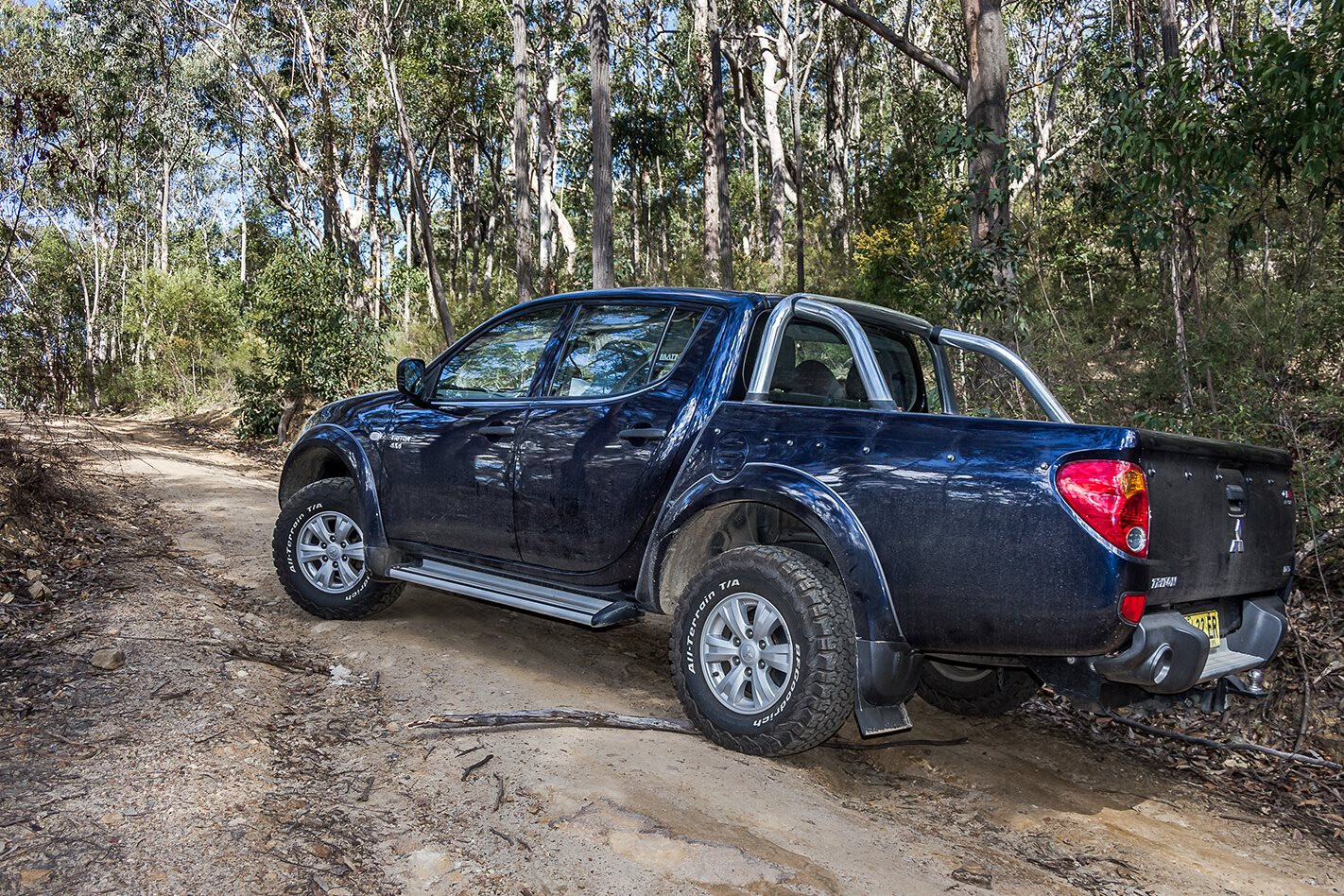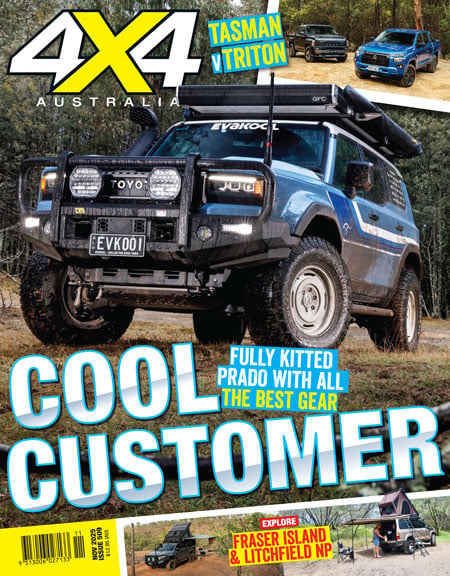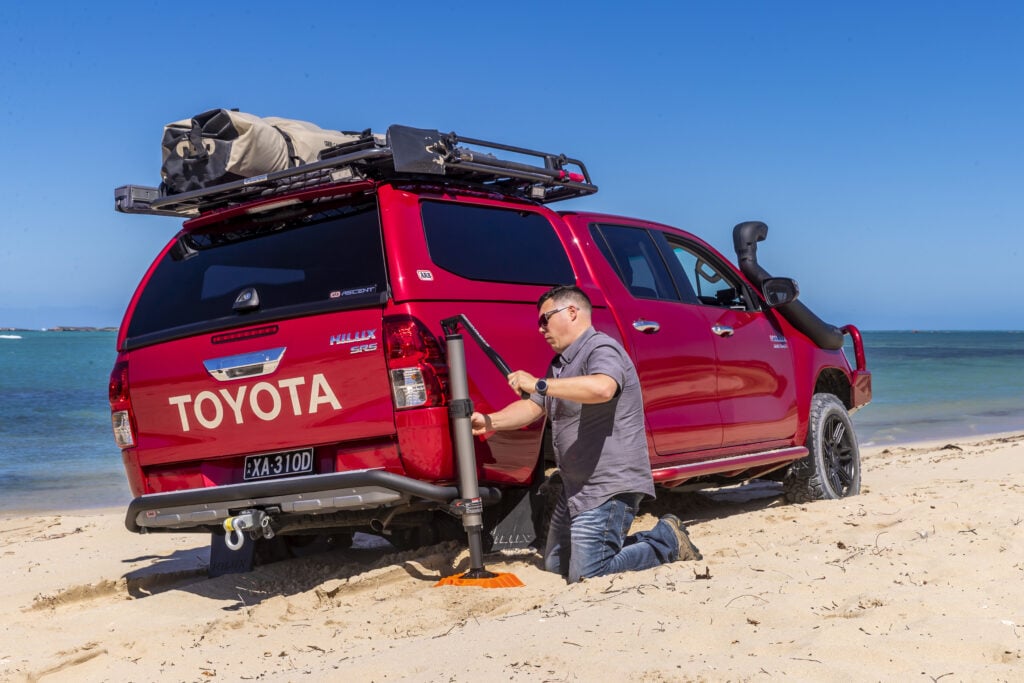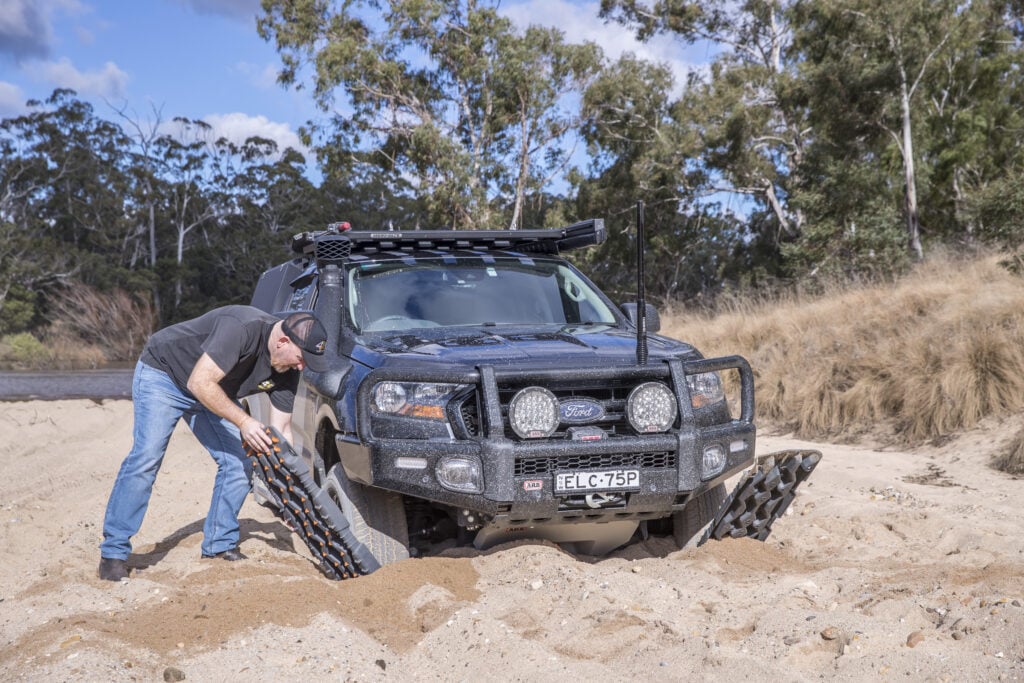YOU CAN get bogged in mud, ruin your 4×4 in river crossings and destroy your panels in the rocks, but when it comes to life-threatening situations, steep ascents and descents well and truly have a monopoly.
More often than not they’ll be covered in loose, scrabbly rocks, with a pants-browning cliff to one side, and they’ll gradually get steeper – meaning the gear you need at the bottom isn’t the same as the gear you need at the top. It’s a dangerous cocktail of lethal proportions that requires absolute control at all times.
So what do you do when you find out halfway up a hill you’ve bitten off more than you can chew? Well, you can chew faster and hope you get lucky, or you can take the easy option and head back to the bottom for a second, more educated attack. We like doing things the smart way around here, so we strongly advise you take the second approach. Believe it or not, it’s easier than you might think.
STEPS
1. IDENTIFY THE SITUATION SITUATIONAL awareness can be a life-saver when off-road. Whenever you’re driving in potentially dangerous situations it’s vital to be aware of your vehicle and surroundings. Can you hear the engine labouring? Are the RPMs slowly but steadily dropping? Is the track about to take a steep turn that might see you sliding backwards towards a cliff? If so, it’s time to bring the hill-stall recovery into action.
2. STOP THE VEHICLE ONCE the situation begins deteriorating you’ll need to stop. Before jamming on the brakes, look around for a spot to secure your 4×4. If you’re in a convoy, think what stopping means for vehicles behind. When you’ve decided where you want to come to rest, gently take your foot off the accelerator and apply the brakes until the engine stalls, keeping your foot off the clutch. You can rely on the engine’s compression braking to provide another fail-safe to stop you rolling backwards.
3. SECURE THE VEHICLE YOU’VE got two methods to secure the 4×4. One is the engine. Unless you’re driving a compressionless 30-year-old LandCruiser, it should be able to hold you in place, even in high-range. You’ll also have your foot on the brake, but taking your foot off the pedal is a gamble. Pull the handbrake on as far as you can, without it being awkward to release. If you’re in that one-in-a-million situation you may still slide backwards as you stall. If that’s the case, see the ‘When it all goes wrong’ breakout (bottom of article).
4. GRAB REVERSE WITH your foot on the brake holding the vehicle steady (first stopper), in gear (second stopper)and the handbrake acting as your fail-safe (third stopper), gently depress the clutch and slot the gearbox into reverse. When you’re heading back downhill you’ll want as much control as possible. So if you were in high-range when you stopped, now is the time to select low-range.
5. IDENTIFY WHY YOU STOPPED IT’S very rare to find yourself in trouble when adequately prepared. In fact, most situations like this arise because the gentle incline you started driving up in 2WD slowly got steeper. With your 4×4 sitting secure, now’s the time to identify the issue and correct it. Selecting a lower gear, engaging low-range, locking in the hubs and airing down the tyres is normally enough to get you back in control and ready for the descent.
6. PLAN YOUR ESCAPE NOW is the time to plan your escape. It’s important to identify exactly where you intend to stop. Is there a side track you can steer into and turn around? Will you need to negotiate a tricky section of track in reverse? Are there any sharp corners you’ll need to plot your way around? If the track behind you is anything more than a straight run backwards, you’ll need a plan for each obstacle. If your passenger is able, it’s a good idea to have them walk back down the hill beside you as a second set of eyes.
7. LET THE BRAKE GO WHEN you’re ready to start heading backwards you’ll need to slowly rest the vehicle’s weight on the engine’s compression again. Start by releasing the handbrake; it’s generally on your least dominant arm and difficult to precisely control when releasing. Next, slowly release the brake pedal until you feel the weight transferring from the brakes to the engine.
8. START THE ENGINE TURN the key and start the engine, with your right foot covering the brakes, your left foot off the clutch, and the 4×4 in reverse. It may hesitate to turn over, but when it starts you’ll be driving backwards. Stay off the brakes and use engine braking for a controlled descent. If you’re uncertain reversing, looking over your shoulder is a sure-fire way to get disorientated. You’re better off using both mirrors, with both hands on the wheel. To go right, pull the steering wheel down with your right hand; to go left, pull the wheel with your left hand.
9. PICK A REFERENCE POINT NO MATTER how good you are at driving, sometimes you can lose vision when reversing, especially on the outside of a turn or on very rough terrain. Remember, if you were able to drive through the track in the first place, you know there’s enough room. Pick the side you can see and stick to it as closely as possible. You’ll be guaranteed to stay away from any potential dangers on your blind side, even if you can’t see them.
10. TRY SOMETHING DIFFERENT ONCE you’re safely at the bottom of the hill it’s time to plan your method of attack. If it’s not vital to get to the top, sometimes it’s easier to simply take another route. Otherwise, try doing something different on your second approach. Reassess what made you unsuccessful on your first attempt; it may be as simple as picking a different path, using a lower gear, lowering tyre pressures, or even just locking the hubs in.
WHEN IT ALL GOES WRONG
TRY as you might, sometimes things just go wrong and there’s very little you can do to stop it. In situations like this it’s vital to have an escape plan; identify the potential dangers before they happen and know what you’re going to do if the worst does happen. In most situations this will be as simple as working with gravity. If you start sliding backwards before you can regain control, fighting it with heavy braking and exaggerated steering can see you sliding out of control and even rolling. You’re far better off letting gravity take the vehicle, and then make slow but deliberate steering inputs to guide it back down the track. Once you’ve regained steering control you can attempt gentle braking. In almost all situations you’re better off being in control at 30km/h than being out of control at 5km/h.





